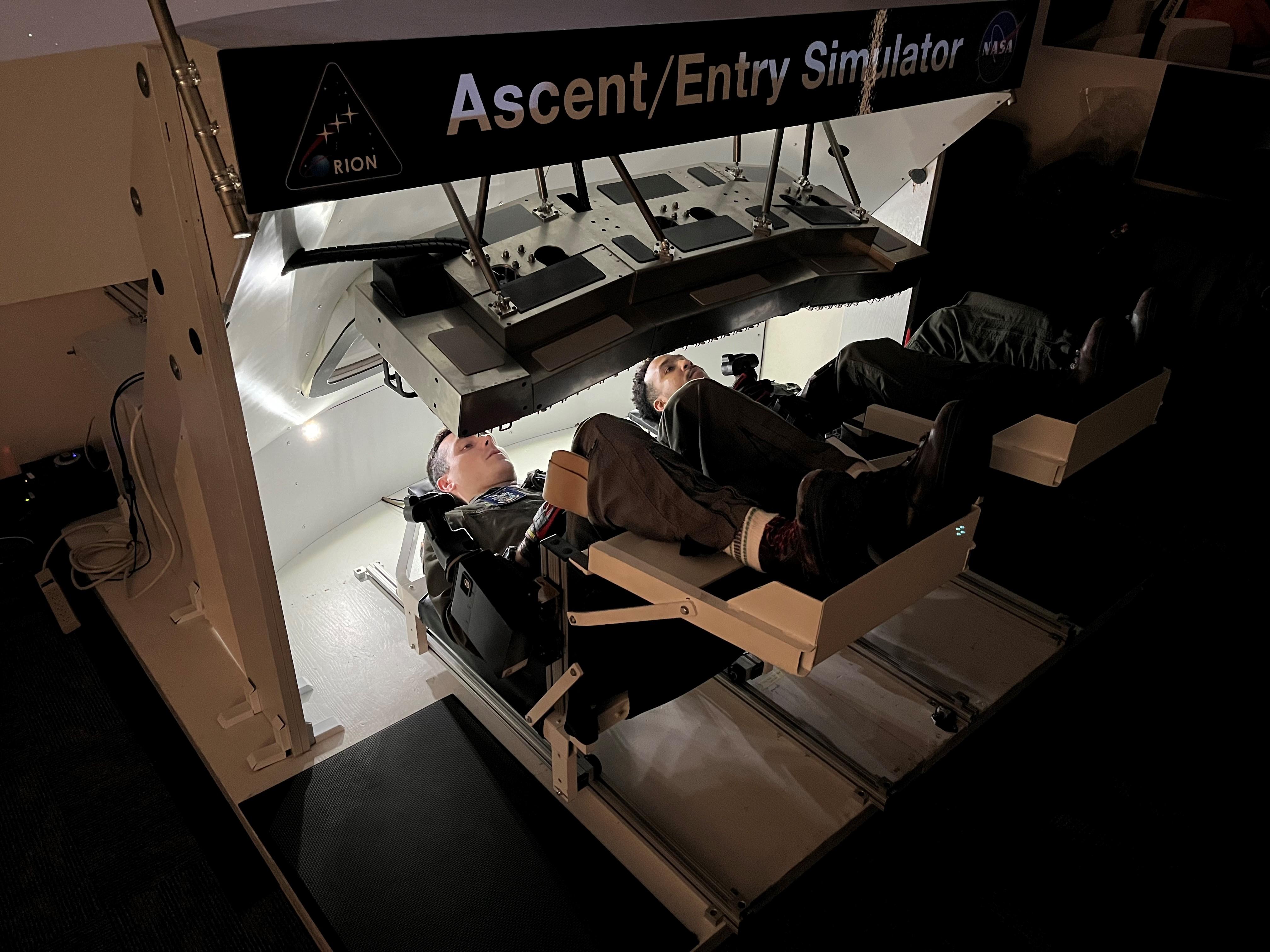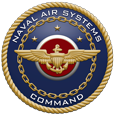
U.S. Naval Test Pilot School students Lt. Nathaniel Kruder and Lt. Guy Williams evaluate the human-machine interface of the Orion spacecraft for NASA while attempting to capture and maintain very specific flight parameters. The tests were part of a technical exchange for USNTPS students at NASA’s Johnson Space Center in Houston, Texas. (U.S. Navy photo)
Naval test pilot school students evaluate Orion handling qualities at NASA
As part of a technical exchange with NASA’s Johnson Space Center in Houston, Texas, 24 test pilots under instruction from the Naval Air Warfare Center Aircraft Division’s (NAWCAD) U.S. Naval Test Pilot School (USNTPS) were invited to spend a week at NASA to evaluate the Orion spacecraft controls and displays during orbital maneuvering and re-entry procedures. The Johnson Space Center is where astronauts primarily train for their missions to space.
The technical exchange is a two-week segment of the intense, 11-month USNTPS curriculum that gives students exposure to other agencies, governments, and organizations that perform flight tests at different classifications and technology levels. This year, students spent one week of that exchange experience at NASA.
“Test Pilot School teaches students not only how to test aircraft, but any system, software, or vehicle for any potential missions,” said Cmdr. Jeffrey Webb, fixed-wing flight instructor at USNTPS. “The evaluation of the Orion spacecraft gave them opportunity to broaden their experience and think about flight testing in an unfamiliar system, performing unfamiliar tasks, to accomplish an unfamiliar mission.”
Capt. Adam Klein is Chief Test Pilot for NAWCAD’s Atlantic Test Ranges (ATR) at Patuxent River, Maryland. He is also a fixed wing flight instructor at USNTPS and is employed by NASA as a research pilot. He temporarily stepped away from his NASA duties when he was recalled to active duty at ATR and USNTPS supporting his Navy Reserve status.
“Our students performed a simulated hand-flown, manual re-entry into the Earth’s atmosphere after a return trajectory from the moon,” said Klein, who explained this was the first time USNTPS students were given such a dynamic Orion test by NASA.
“The students were asked to evaluate the human-machine interface of Orion while attempting to capture and maintain very specific flight parameters such as vehicle pitch, roll, and yaw, all while preserving maneuvering fuel in an attempt to successfully splashdown in the Pacific Ocean off the coast of California.”
According to Klein, NASA uses an in-house team of engineers in a Rapid Prototyping Laboratory (RPL) to develop the interface for their spacecraft. The engineers at the RPL get a set of high-level requirements for a control or a display of a spacecraft, then conduct rapid prototyping either through 3D printing of hardware or the generation of software, followed by evaluation of their design by astronauts.
According to Webb, the students provided feedback to the RPL relating to the accuracy and precision with which they were able to capture re-entry orientation, refine their landing zone, and complete terminal maneuvers prior to splashdown.
“This gives the RPL immediate feedback to make necessary changes before moving on to the next design task,” said Klein. Only when the design is finalized is it then sent to the vendor to make flight-ready hardware and software for the aircraft.
“NASA routinely invites USNTPS to return,” said Klein. “They get valuable feedback from a unique perspective since not all astronauts have a test pilot background.”
Some of the feedback from USNTPS students over the years has actually been integrated into design changes for the Orion spacecraft that will be bringing humans back to the moon as part of the Artemis campaign.
USNTPS is a component of Naval Test Wing Atlantic, test wing under the NAWCAD, located at NAS Patuxent River, Maryland.
NAWCAD employs more than 17,000 military, civilian and contract personnel. It operates test ranges, laboratories and aircraft in support of test, evaluation, research, development and sustainment of everything flown by the Navy and Marine Corps. Based in Patuxent River, Maryland, the command also has major sites in St. Inigoes, Maryland, Lakehurst, New Jersey, and Orlando, Florida.
